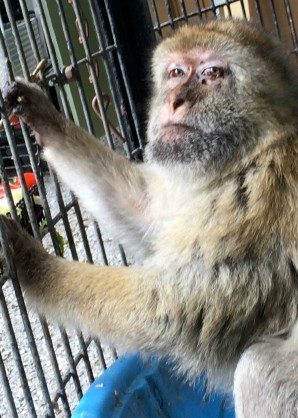The Southern Nevada Zoological – Botanical Park was unofficially referred to as the Las Vegas Zoo. It was also known as a poorly managed and unsuitable home for its 200+ animal residents.
In the thirty years since it was founded in 1981, the Las Vegas Zoo received complaints, citations and fines from a number of federal and animal welfare agencies, including the U.S. Department of Agriculture (USDA), Occupational Safety and Health Administration and People for the Ethical Treatment of Animals. Animals had died in the zoo’s care for a myriad of seemingly avoidable causes, such as over-feeding by crowds of attendees, the protective shooting of an escaped leopard, and a lion that perished after eating a rubber ball. Employee complaints about improper living conditions for the animals and insufficient veterinary care had been lodged against the zoo since at least 1989.
It took until September 2013 for the zoo to finally succumb to the problems that had plagued it all along. Although more recent routine USDA inspections in 2012 had found violations due to improper protection from sun and heat exposure, insufficient record keeping in regards to employee training and unsafe food preparation areas, each time the facility was permitted to patch things up and remain open. And yet, it seems that in September 2013, the zoo employees finally became sufficiently fed up with the facility’s substandard conditions and lack of improvements – they just walked off the job. Concerned citizens reported the situation to animal welfare officials, and a USDA inspection promptly followed.
Financial obstacles and fundamentally flawed business practices would prohibit the zoo from opening again, and it became clear that homes were immediately needed for its’ animal residents.
Amongst the exotic creatures living at the Las Vegas Zoo were a chimpanzee named Terry and four Barbary macaques. For the past 17 years, Terry had lived alone in a dirty cage described as “littered with rotten bananas, one shriveled orange and … filthy water.” This chimpanzee, who would naturally be living in a diverse social group in the wild, had been deprived of physical contact with other chimpanzees since his partner Simon died in 1995. Documented stories in the media going back as far as 2001 discuss the symptoms of his obvious depression and withdrawal.
The four macaques, Rex, Soda, Shatar and Saidah, were obese, had dental problems, and were in poor health overall. This is most likely due to living years with a poor diet and lack of exercise and stimulation.
Shatar
When the USDA contacted the North American Primate Sanctuary Alliance (NAPSA) for emergency assistance in caring for Terry and the Barbary macaques, Primate Rescue Center staff joined up with our colleagues at Save The Chimps to rescue the primates. Once the rescue team made it out to Las Vegas, the chimpanzee and macaques were sedated, examined by veterinarians and issued travel papers for their long journey to their new homes. Terry the chimpanzee was headed to Florida to spend the rest of his days amongst his own kind at Save The Chimps, and the Barbary macaques had a good future to look forward to at the Primate Rescue Center.